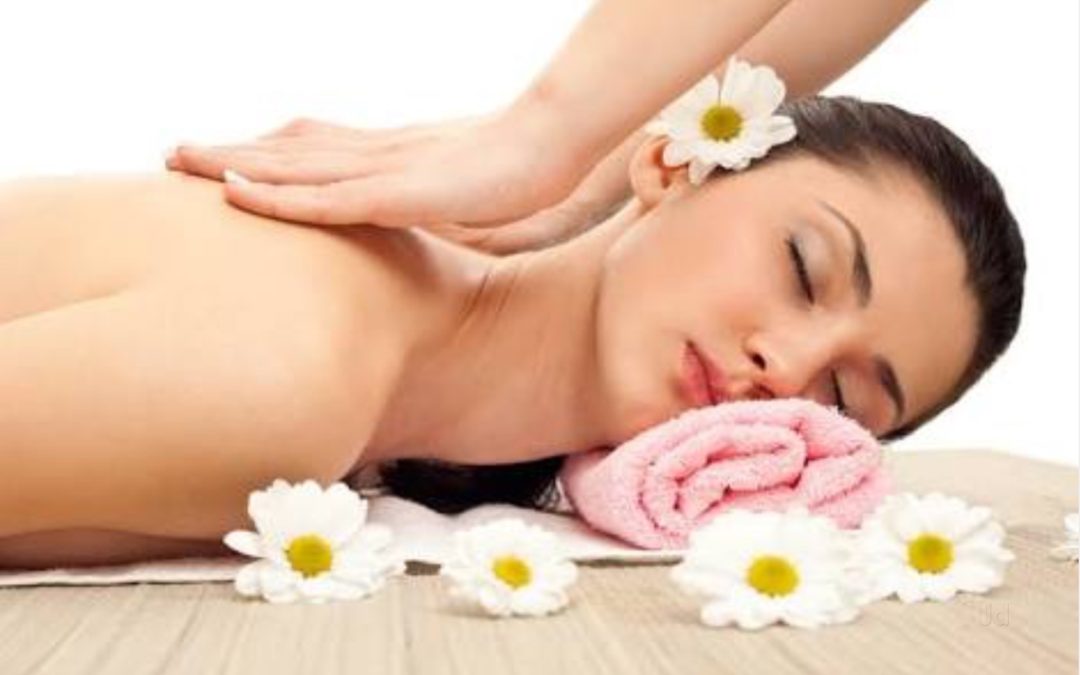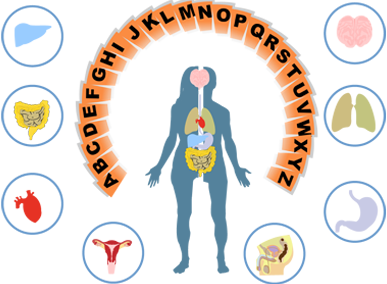by admin | Nov 17, 2018 | Uncategorized
Social isolation has been linked to higher mortality in studies comprising mostly white adults, yet associations among black adults are unclear.
Washington DC: Findings of a recent study have linked social isolation to a higher risk of death. The study, appearing in the American Journal of Epidemiology, says addressing social isolation holds promise if studies show interventions are effective, as they could be relatively simple and could influence other risk factors, as social isolation is also associated with hypertension, inflammation, physical inactivity, smoking, and other health risks.
Social isolation has been linked to higher mortality in studies comprising mostly white adults, yet associations among black adults are unclear. The new prospective cohort study, led by the American Cancer Society’s Kassandra Alcaraz, evaluated whether associations of social isolation with all-cause, cardiovascular disease and cancer mortality differed by race and sex.
Investigators weighted several standard components of social isolation -marital status, the frequency of religious service attendance and club meetings/group activities, and a number of close friends/relatives–giving a score of 0 (least isolated) or 1 (most isolated) on each of the factors for a total on a 5-point isolation scale.
For instance, someone who was married, frequently attended religious services, attended club meetings and/or group activities, and had seven or more close friends were given an isolation score of 0. Someone with none of those would have an isolation score of 4.
They found overall, the race seemed to be a stronger predictor of social isolation than sex; white men and white women were more likely to be in the least isolated category than black men and women. In the full sample, a statistically significant, positive dose-response relationship was found between social isolation and all-cause mortality risk over the 30-year follow-up period. However, associations were significantly stronger in the first 15 years of follow up.
Social isolation score was positively associated with heart disease (CVD) mortality in all subgroups. Although there was a positive association between social isolation score and cancer mortality among white men and white women, there was no association between social isolation score and cancer mortality among black men or black women. Each social isolation component was associated with all-cause and CVD mortality, and all but one (having fewer close friends/relatives) was associated with cancer mortality.
“Current findings indicate that a composite measure of social isolation is a robust predictor of mortality risk among men, women, blacks, and whites,” write the authors. “Compared with the least isolated, the most socially isolated black men and women had a more than the 2-fold higher risk of death from any cause, and white men and women had 60 per cent and 84 per cent greater risks of death, respectfully.”
The authors say as the era of precision medicine develops, several influences on health, including social factors, are expected to become more important to clinical care. Addressing social isolation is aligned with this more holistic approach, they write, saying: “Lack of interpersonal connections seems particularly detrimental.”
Updated Nov 17, 2018 | 15:53 IST | ANI

by admin | Nov 17, 2018 | Uncategorized
The review looked at the results of 70 trials involving almost 20,000 women and found daily Omega-3 supplementation reduced the risk of birth before 34 weeks by 42 percent, and birth before 37 weeks by 11 percent.
“It is an extremely promising finding because we now have strong evidence that Omega-3 supplements are a simple and cost-effective intervention to prevent premature birth, which we know has serious health implications,” Professor Maria Makrides, theme leader and deputy director of the South Australian Health and Medical Research Institute (SAHMRI), told 9News.
The review was conducted by a team of researchers at SAHMRI, the Women’s and Children’s Hospital, and the University of Adelaide.
Children’s Hospital, and the University of Adelaide.
Omega-3 could significantly reduce the risk of premature births.
Omega-3 could significantly reduce the risk of premature births. (AAP)
The findings suggest women expecting a single baby should start taking a daily dose of Omega-3 at the 12-week stage of their pregnancy.
The supplement needs to contain between 500 and 1000 milligrams of Omega-3, with at least 500 milligrams of the Omega-3 called DHA (docosahexaenoic acid).
“By increasing their Omega-3 intake, women can give themselves the best chance of carrying their baby to full term of 40 weeks. Even a few extra days in the womb can make a substantial difference when it comes to your baby’s health,” Professor Makrides said.
The breakthrough findings were made by South Australia.
The breakthrough findings were made by South Australia. (AAP)
One in ten babies in Australia are born prematurely and researchers estimate the report’s findings could reduce this by a quarter.
Premature birth complications are the leading cause of death for children under five years old.
Premature babies are also more likely to have chronic issues with their respiratory, immune and digestive systems and are more susceptible to problems with speech, social skills, learning and behaviour.
“Supporting premature babies in intensive care and treating ongoing challenges related to premature birth places significant pressure on families, the community and the health system,” SA Minister for Health and Wellbeing, Stephen Wade, said.
“The evidence from this review is both exciting and compelling and something that needs to be investigated further,” Minister Wade said.

by admin | Nov 17, 2018 | Uncategorized
Pain will affect the quality of life and it is important to pay attention to it so as to ensure the inner cause does not worsen. Various pain medications are available but regular consumption of the same might have serious side effects on our health. There are safe ways of countering pain and massage therapy is one such. Massage therapy is commonly suggested for lower back pain relief, neck pain, joint stiffness etc.
Till a few years, back massages were only considered as an indulgence for pain relief but today with various methods and their effects being the focus of studies and research we understand that massages can have therapeutic effects as well. From relaxing stiffness in joints and muscles to relieving anxiety and stress, a session of massage therapy could dawn its effects on you. These treatments have the ability to shut the pain gates and stimulate the competing nerve fibers in our body. The effects are significant that people suffering from various chronic pains are turning towards massage therapy for rescue.
Massage therapy and pain relief:
Various researches have indicated that massage therapies are capable of reducing and managing pain in various parts of our body for both short and long terms. Immediate pain relief and long-term pain relief are both possible with massage therapy. A study published by Complementary Therapies in Clinical practice suggested that hand pain and overall grip was enhanced in people who followed a 4-week massage schedule and also followed up with few massages at home. They were also observed to have lower levels of stress and anxiety and it also elevated their mood. Chronic neck pains, postoperative pain, headaches, neck, leg and back pain in case of pregnant women etc, have been seen to show a considerable reaction to regular massage therapies that were scattered into 2 to three sessions a week or more based on the need.
A study at Flagstaff medical center in Arizona involved patients who were subjected to massage therapies for pain relief. The study concluded that massage therapy when embedded into acute care settings is capable of creating a positive ground for patients to heal and to relieve the pain of physical as well as psychological conditions. They had better sleep patterns, faster recovery, and significantly low pain levels than before.
The varying degrees of pressure used during massage therapies are related to the type and intensity of the problem being treated. While certain people require deep tissue massage which is painful by itself, varying levels of pressure is usually given based on patients willingness. Lighter massages tend to have a more relaxing effect and are more beneficial. In fact, certain conditions such as chronic fatigue syndrome will require only such light and soft touch massages.
Many people look for massage therapies especially in case of chronic pain as it helps in the release of serotonin which is our body’s natural mechanism to protect us against pain. Arthritis and fibromyalgia are some of the common syndromes that are treated with massage therapies where there have been significantly positive results of pain relief. In fact, apart from reducing pain in the sites, enhancing the quality of sleep and elevating the mood both positively influence in treating these conditions which are by-products of massage therapy.
Massage therapy can:
Reduce the inflammation especially around joints that cause discomfort during motion as well as swelling around the nerves.
It improves the blood circulation in the sites which enables faster healing process. It lubricates the joints and improves delivery of necessary nutrients and oxygens required by the tissues here.
It also develops the levels of circulating hormones in our body and helps us develop more tolerance to pain overall.
Other Benefits of massage therapy:
Helps you relax: Stress has become an integral part of our everyday lives. Hormones such as cortisol and adrenaline release during this time and this make your heart beat faster and your blood pressure to rise and eventually causes your muscles to feel stiff and tight. A calm massage will help relax your muscles and enhance your concentration and build back your strength. While massages are quite effective for acute stressful situations prolonged conditions will need more therapy or treatment that can be performed in combination with massage therapy for great results.
Better sleep: Massage therapies are capable of improving sleep and decreasing fatigue. Massage with essential oils can relax your muscles and improves the mood. Alternatively having an essential oil diffuser in your bedroom can further enhance your relaxation.
Points to keep in mind:
Intensity and frequency of massage vary for different conditions and patients. While certain people have said to benefit from even 1 or 2, 30- minute session a week, a few required longer sessions and higher frequency for pain relief.
Increase intake of vitamin D as this will help in improving your body’s natural mechanism for pain relief. Sun exposure, cheese, egg yolk, fatty fish are some natural sources of vitamin d which needs to be included in your diet for better results.
It is important to know that resorting to massage on inflamed skin or in infections could turn out causing spread of infections. Hence diagnosing the situation and getting professional help before choosing a massage therapy is very important.
Massage therapy may not be a hundred percent effective solution for all situations and hence if the problem does not get better even after regular session consult for alternatives or combine it with other therapies as suggested by a professional.




Recent Comments